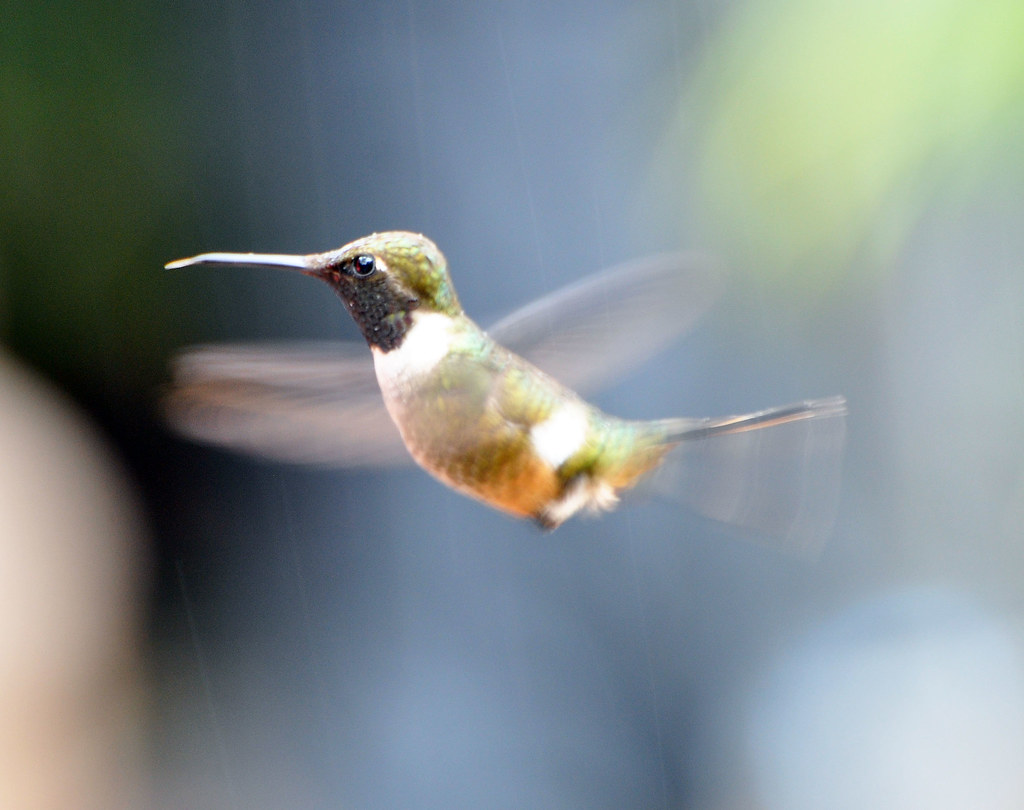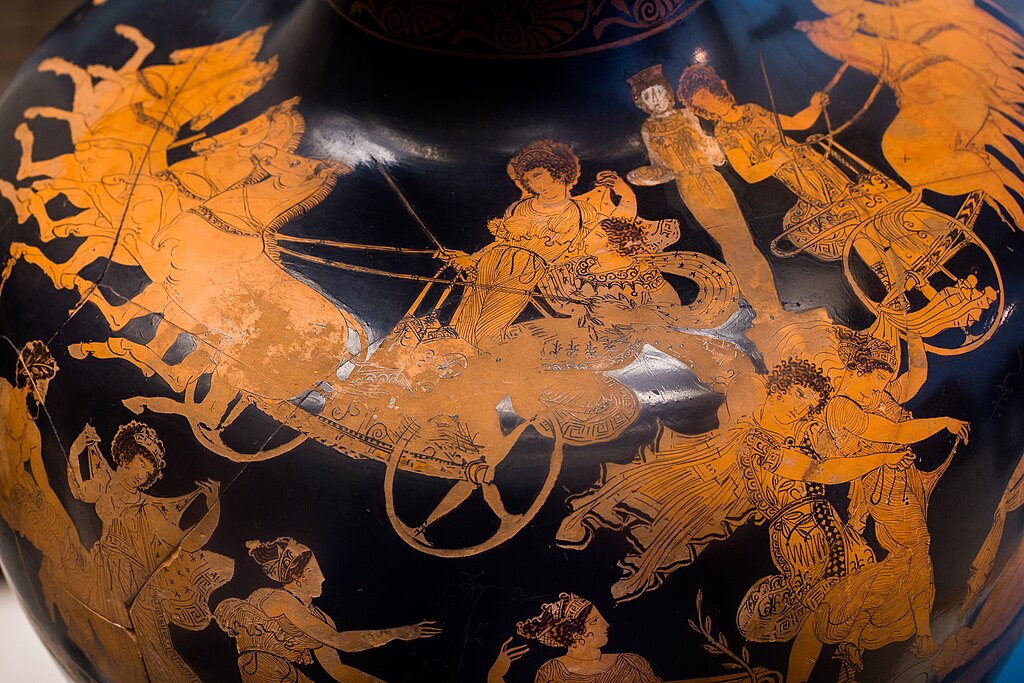Arrête de faire le zouave, ne fais pas ta maligne, comme la belle-sœur saphique close en sa pyramide, surprise par le destin d’un aigle pantouflard, ou cette mère des victimes d’un jumeau violateur, les fillettes chicanières du bel étalon blanc, que le lynx convoita mais qu’un castor conquit.

Photo d’une Philodice bryantae par Don Faulkner (Lic. cc-by-sa-2.0).
Références littéraires & scientifiques sur la Philodice de Mme Bryant:
Présentations: Avibase.bsc-eoc.org: Philodice bryantae Colibri magenta, IucnRedlist.org: Philodice bryantae Magenta-throated Woodstar, eBird.org: Philodice bryantae Colibri magenta – Estrella Gorguimorada, Anthony-Lujan.com: Magenta-throated Woodstar Philodice bryantae, Birda.org: Magenta-throated Woodstar Philodice bryantae,
Encyclopédies: The Birds of the Republic of Panamá Part 2 1968 par Alexander Wetmore BiodiversityLibrary.org ou Archive.org: Philodice bryantae Lawrence – Costa Rican Wood-star Estrella Montañesa costarriqueña, A Guide to the Birds of Panama 1989 par Robert S. Ridgely et John A. Gwynne: Magenta-throated Woodstar Calliphlox bryantae, The Birds of Panama – a field guide 2010 par George R. Angehr et Robert Dean: Magenta-throated Woodstar Calliphlox bryantae, Hummingbirds A Life-size Guide to Every Species 2014 par Michael Fogden et aliae: Calliphlox bryantae Magenta-throated Woodstar, Birds of Central America 2018 par Andrew C. Vallely et Dale Dyer: Magenta-throated Woodstar Calliphlox bryantae,
Nomenclature: Journal für Ornithologie I Jahrgang 1853 BiodiversityLibrary.org: Aufzählung der Colibris oder Trochilideen in ihrer wahren natürlichen Verwandtschaft nebst Schlüssel ihrer Synonymik – Sylphae Elfen – Trochilinae Elfen-Elfen – Calliphlox — Doricha par Ludwig Reichenbach, Essai d’une classification méthodique des trochilidés extrait des Mémoires de la Société Impériale des Sciences Naturelles de Cherbourg 1866 BiodiversityLibrary.org ou Archive.org: Les Amathusiaires – Amathusia – S.-g. Philodice par Martial Étienne Mulsant et Jules & Edouard Verreaux, Annals of the Lyceum of Natural History of New York Volume VIII 1867 BiodiversityLibrary.org ou Archive.org: Descriptions of New Species of Trochilidæ – Doricha bryantæ par George N. Lawrence, La Feuille des jeunes naturalistes Vingt-Huitième Année Books.Google.fr: Septembre 1898 – Révision des genres de la famille des Trochilidés Suite – Nous avons rétabli le genre Philodice en lui adjoignant un certain nombre d’espèces telles que D. Bryantæ par Eugène Simon,
Taxinomie: Proposal 164 to South American Classification Committee 2005 Museum.Lsu.edu: Recognize Philodice as a separate genus from Calliphlox par Gary Stiles, Current Biology 2014 ScienceDirect.com: Molecular Phylogenetics and the Diversification of Hummingbirds with Supplemental Information – Time-calibrated phylogenetic estimate for hummingbirds and outgroup species par Jimmy A. McGuire et alii, BMC Evolutionary Biology 2017 BmcEcolEvol.BioMedCentral.com: The conquering of North America – dated phylogenetic and biogeographic inference of migratory behavior in bee hummingbirds par Yuyini Licona-Vera & Juan Francisco Ornelas, Evolution 2018 eScholarship.org: Complex coevolution of wing tail and vocal sounds of courting male bee hummingbirds par Christopher J. Clark et alia, Proposal 886 to South American Classification Committee 2020 Museum.Lsu.edu -et- AOS North and Middle America Classification Committee Proposal 2021-A-12 AmericanOrnithology.org: Resurrect Philodice as a separate genus from Calliphlox par David B. Donsker et alia, Clements Checklist Updates & Corrections 2019 Birds.Cornell.edu: Change the scientific name of Magenta-throated Woodstar from Calliphlox bryantae to Philodice bryantae, Ornithology 2021 Academic.Oup.com: Sixty-second Supplement to the American Ornithological Society’s Check-list of North American Birds – Change Calliphlox bryantae to Philodice bryantae par R. Terry Chesser et alia, IOC Version 11.2 July 2021 World Bird List Taxonomic Updates WorldBirdNames.org: Philodice bryantae – Philodice is resurrected for two species of woodstar,
Magenta-Couleur: La ricerca Loescher.it: Viva il magenta! par Sara Urbani, Colore digitale blog Mauro Boscarol.com: Perché il colore magenta si chiama così, Revista de Lenguas para Fines Específicos Ulpgc.es: Semantic shift of the colour-terms maroon and magenta in British Standard English – The meaning of magenta par Laura Wright, The World According to Color – A Cultural History par James Fox Userapi.com: Purple The Synthetic Rainbow – The Battle for Magenta, We Are Star Stuff EarthandStarryHeaven.com: The Battle of Magenta par Sheena McGrath, Before You Garden.com: Magenta Maligned – Flower Color in the Garden par Jenny Rose Carey, Daily Jstor.org: Why Victorian Gardeners Loathed Magenta par Allison C. Meier, The Gardens Trust – Garden History: Colour in the Garden ‘Malignant Magenta’ par Susan W. Lanman, Wood and Garden par Gertrude Jekyll Gutenberg.org ou Archive.org: Crimson is a word to beware of – it stands for a rich blood colour or for a malignant magenta,
Sémantique: Birds of the World.org: The Key to Scientific Names Edited by James A. Jobling – Philodice et Doricha, Artistotle University of Thessaloniki – Portal for The Greek Language – Dictionary of Standard Modern Greek Greek-Language.gr: philódikoç – philódikê, Lsj.gr: philódikoç et philodikía-ê,
Philodice-Mythe: A Dictionary of Greek and Roman biography and mythology édité par William Smith Perseus.Tufts.edu: Philodice par Leonhard Schmitz, Theoi.com: Leukippides – Greek Demi-Goddess Wives of the Dioscuri, HistoryReport.gr: Oi kóreç tou Leúkippou, Dieux & Mytho.fr: Les Leucippides Phébé et Hilaire en mythologie grecque – amour tragédies et héritage, University of Edinburgh Era.Ed.ac.uk: Leucippides in Greek Myth – Abductions Rituals and Weddings par Claudia Baldassi, Eulexis-web Bailly 2020 Biblissima.fr: Leúkippoç-leúkippoç et Lugkeúç, Complutense University of Madrid – Paremia Cvc.Cervantes.es: To have Lynceus’ eyesight par Fernando García Romero,
Philodice-Sources: Scholia to Lycophron’s Alexandra d’Isaak et Ioannis Tzetzes -traduction anglaise- Aikaterini Laskaridis Foundation ToposText.org: 511bis The Dioscuri – Philodice’s daughters were Phoebe and Hilaeira, Lycophronis Alexandra recensuit Eduardus Scheer texte grec – Volume II Scholia continens -De editionibus Tzetzae- Archive.org: 511 toîç êmithnêtoiç – Leukíppou kaì Philodíkêç têç Ináxhou Phoíbê kaì Hiláeira, La Bibliothèque – traduction française par Étienne Clavier et texte grec d’Apollodore le Mythographe Remacle.org: Livre III Chapitre X § 3 – Leukíppou dè thugatéreç égénonto Hiláeira kaì Phoíbê – taútaç àrpásanteç ëgêman Dióskouroi / De Leucippe et de Philodice fille d’Inachus naquirent deux filles Hilaïre et Phœbé – Les Dioscures les ayant enlevées les épousèrent, Idylles – traduction française par Léon Renier et texte grec de Théocrite Gallica.bnf.fr: XXII Dioskouroi / Les Dioscures, Les Belles Lettres – Hygin Fables: LXXX Castor – traduction française par Jean-Yves Boriaud et texte latin d’Hygin, Les Fastes traduction française par Anne-Marie Boxus & Jacques Poucet et texte latin d’Ovide Fltr.Ucl.ac.be: Livre V Mai – Les derniers jours – Phébus pénètre dans le signe des Gémeaux · Origine de cette constellation / In Geminos ex quo tempore Phoebus eat · Causam mihi sideris huius,
Doricha-Légendes: Co-Geeking.com: Doricha Mastering the Art of Cosmopolitanism par Erik Jensen, L’odyssée culturelle de Marie LesPetitesHistoiresdelaMythographe.home.blog: Rhodopis une Cendrillon égyptienne, L’Antiquité Classique 1934 Persée.fr: La «Quatrième Pyramide» de Gizeh et la légende de Rhodopis par Baudouin Van de Walle, Bulletin de l’Institut français d’archéologie orientale 1972 Ifao.egnet.net: Nitocris Rhodopis et la troisième pyramide de Giza par Christiane Zivie-Coche, The Journal of Hellenic Studies Volume XXIV 1904 Archive.org: Nitokris-Rhodopis par Henry R. Hall, Pour l’amour du grec.com: Rhodopis – Désespoir de la poétesse Sappho pour son frère dépensier par Paul Schubert, AntigoneJournal.com: Rhodopis the Courtesan Who Annoyed Sappho par Dobrinka Chiekova, Poesia e Società – Comunicazione poetica e formazioni sociali nella Lesbo del VII/VI secolo a.C. 2007 – Università di Bologna AmsDottorato.unibo.it: La comunità saffica – Un ruolo per Afrodite – Un propemptikón – La vicenda di Carasso par Stefano Caciagli, Studies in Archaic and Classical Greek Song – The Newest Sappho 2016 Brill.com: The Newest Sappho and Archaic Greek-Near Eastern Interactions – Sappho Charaxos Rhodopis/Doricha and the Historical Significance of the “Newest Sappho” par Kurt A. Raaflaub, Lexis 2021 University of Venice EdizioniCaFoscari.unive.it: Herodotus the Old Sappho and the Newest Sappho par Giulia Donelli,
Doricha-Sources: The Oxyrhynchus Papyri Part X par Bernard P. Grenfell et Arthur S. Hunt 1914 Archive.org: New Classical Texts – Papyrus 1231 – Fragment I – Column 1 – Dôríxha tò deúteron ôç pótheinon eís ëron êlthe -‘Doricha comme souhaité est arrivée une seconde fois à sa fin’- par Sappho, Chaerephon.e-monsite.com: Sappho – Fragments – Prière à Cypris en faveur de son frère Charaxos – traduction française par François Lasserre, Histoire – traduction française par Pierre-Henri Larcher et texte grec d’Hérodote Remacle.org: Livre II Euterpe – Égypte – Paragraphes 134 et 135 Pyramide de Rhodopis et de Mycérinus, Géographie – traduction française par Amédée Tardieu et texte grec de Strabon Remacle.org: Livre XVII L’Égypte Chapitre I – Paragraphe 33 Pyramides, Deipnosophistes Le Banquet des Sophistes traduction française par Philippe Remacle & Philippe Renault et texte grec d’Athénée de Naucratis Remacle.org: Livre XIII De L’Amour – Les courtisanes de Naucratis – Doriché maîtresse de Charaxos et épigramme de Posidippe, La Souda Lexique byzantin de Suidas – texte grec et traduction anglaise – Stoa Consortium University of Kentucky Cs.uKy.edu: Rhodôpiç et Rhodôpidoç et Aïsôpoç et Iádmôn,

L’enlèvement des filles de Philodice par les Dioscures, vase de Meidias, Athènes, fin du 5e siècle avant Christ; exposé au British Museum, photo d’ArchaiOptix (Lic. cc-by-sa-4.0). À l’inverse d’Apollodore et de Tzetzès mais conformément à Properce, Pollux prend Hilaïra dans son char, et Castor emmène Phœbé (appelée ici Ériphyle).
Suite: La Colombe mondétour
Textes © 2025 XNB – Association des roses noires






